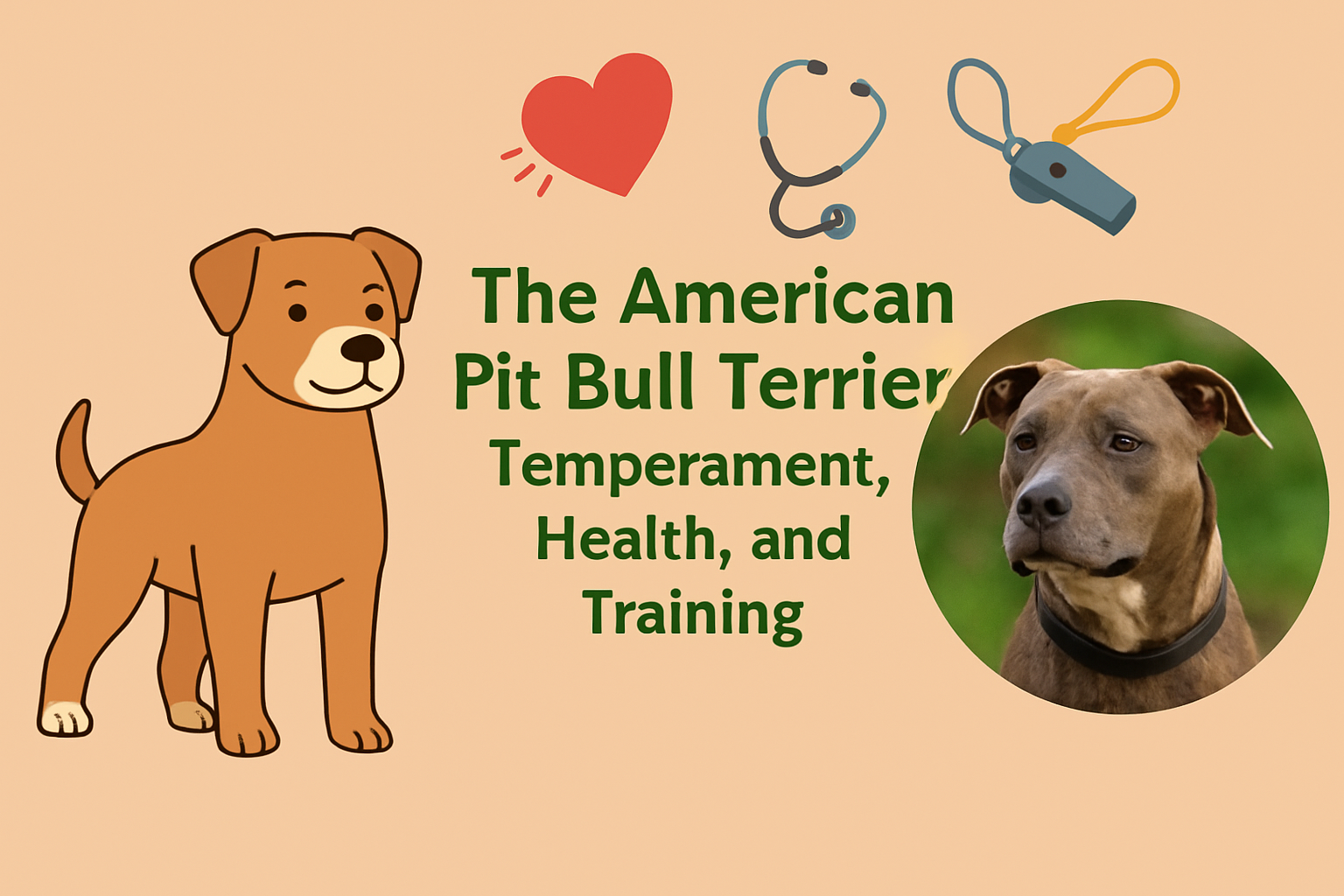The American Pit Bull Terrier: Temperament, Health, and Training
The American Pit Bull Terrier, or Pit Bull, is a robust, agile, and loving dog that has captured the hearts of numerous dog lovers. Despite the age-old myths, the breed is loving, intelligent, and highly devoted. They are wonderful pets and family members as pets if properly trained and settled.
1. Temperament and Personality
Loyal and Devoted
American Pit Bull Terriers are famously renowned to be unconditionally devoted to their family. They become attached to their human and love to seek out wherever they happen to be going, and they love being included in daily routines. They make ideal cuddle friends and play partners because they are loving.
High Energy Levels and Highly Playful
This is a high-energy dog. Playing fetch, a long walk, or agility training are all favorite things for Pit Bulls. They work at their best when their minds and bodies are challenged.
Friendly with Proper Training
Although they also distrust other animals, well-socialized Pit Bulls are usually friendly towards humans and other animals too. Proper training and exposure can do wonders in socializing them.
Confident and Intelligent
Pit Bulls are intelligent and easy to train. They are easy to train and like to do something. They do a fairly good job and are excellent balance dogs if they are stimulated enough mentally.
2. Health and Lifespan
Life Expectancy
With proper care, American Pit Bull Terriers typically have a lifespan of 12 to 14 years. Their resilient, rugged look and healthy immune systems, as well as comfortable living conditions, make life long and healthy.
Average Health Issues
Even very healthy, a few particular diseases may afflict them:
- Hip Dysplasia – A disease of the joints that paralyzes mobility.
- Skin Allergies – Most often induced by food or environmental allergies.
- Hypothyroidism – Can lead to obesity and lethargy.
- Knee Injuries – Over-exercise will make joints work too hard.
Preventive Care
Healthy diet, daily vet check-ups, and proper exercise are a must. Keep them at best weight, watch for developing allergy or joint problems, and put them on a parasite prevent program.
Nail, Ear, and Dental Care
Cut the nails of the American Pit Bull Terrier on a regular basis to prevent pain and joint problems. Clean ears weekly to prevent clogging and infection. Brush their teeth occasionally to keep them clean and prevent plaque.
3. Training the American Pit Bull Terrier
Positive Reinforcement is Key
Reward training is best for Pit Bulls. Punishment and harsh corrections are ineffective. These dogs flourish with attention and opportunities to learn.
4. Exercise and Enrichment Needs
High-Energy Breed
The breed needs at least 60 minutes of high-energy exercise every day. Pit Bulls enjoy running, tugging, climbing, and puzzle play. They get destructive or bored when ignored without proper outlets.
Mental Stimulation
Employ food-dispensing toys, scent games, and agility work to exercise the brain. For this highly intelligent breed, mental stimulation is just as important as physical exercise.
Good Activities Include:
- Fetch
- Tug-of-war
- Canine performance sports (agility, weight pulling, rally)
- Hiking and swimming
- Obedience competitions
5. Living Conditions
House or Apartment?
American Pit Bull Terriers are apartment dogs if provided with lots of exercise. They would love houses with fenced backyards where they can frolic off-leash with supervision.
Family Pets
Pit Bulls, with introductions, will be great pals to kids. They are patient and tolerant by nature, of course, so they are really gentle, but where little children are involved, supervision is always the best.
Other Pets
They can live with other pets if they are brought up together or brought in slowly. Some Pit Bulls are high prey drive, though, so supervision with small pets is the best.
6. Breaking the Stereotypes
Not Naturally Aggressive
Aggression is not a breed trait—it’s a result of poor handling, lack of training, or mistreatment. Properly raised Pit Bulls are among the most affectionate, people-loving dogs you’ll ever meet.
The Importance of Responsible Ownership
With breed-specific legislation and outmoded myths, Pit Bull owners have to work that much harder to socialize and train well-behaved dogs and plead their pet’s case through education and example.
7. Responsible Breeding and Adoption
Choose Ethical Sources
If you must buy a puppy, use responsible breeders who temperament test and health test. Best of all is to get from a breed rescue or local shelter.
Ask Questions About Temperament
Adopt or buy, know the history, temperment, and people and other animal behavior to have a good fit for your home.
FAQ: American Pit Bull Terrier
Q1: Is the Pit Bull an aggressive breed?
No. Pit Bulls are not aggressive. If properly socialized in a stable, loving household, they are friendly, loyal, and people-loving.
Q2: Do Pit Bulls get along with other dogs?
Most do through early socialization. But introductions between the canine animals must be done slowly and under close scrutiny.
Q3: Is the American Pit Bull Terrier similar in appearance to the American Staffordshire Terrier?
They are the same but by different breed names. They share the same beginning but differ somewhat in size, composition, and regulations for registries.
Q4: Number of exercises performed daily by a Pit Bull.
A minimum of 60 minutes of physical activity, and play for the brain. Otherwise, they become restless and bored.
Q5: How to train this breed best?
Positive reinforcement is the answer—praise, treats, and consistency. Harsh discipline will bring resistance and fear.
Q6: Are Pit Bulls apt to be apartment-dogs?
Yes, provided their physical and emotional needs are fulfilled.







